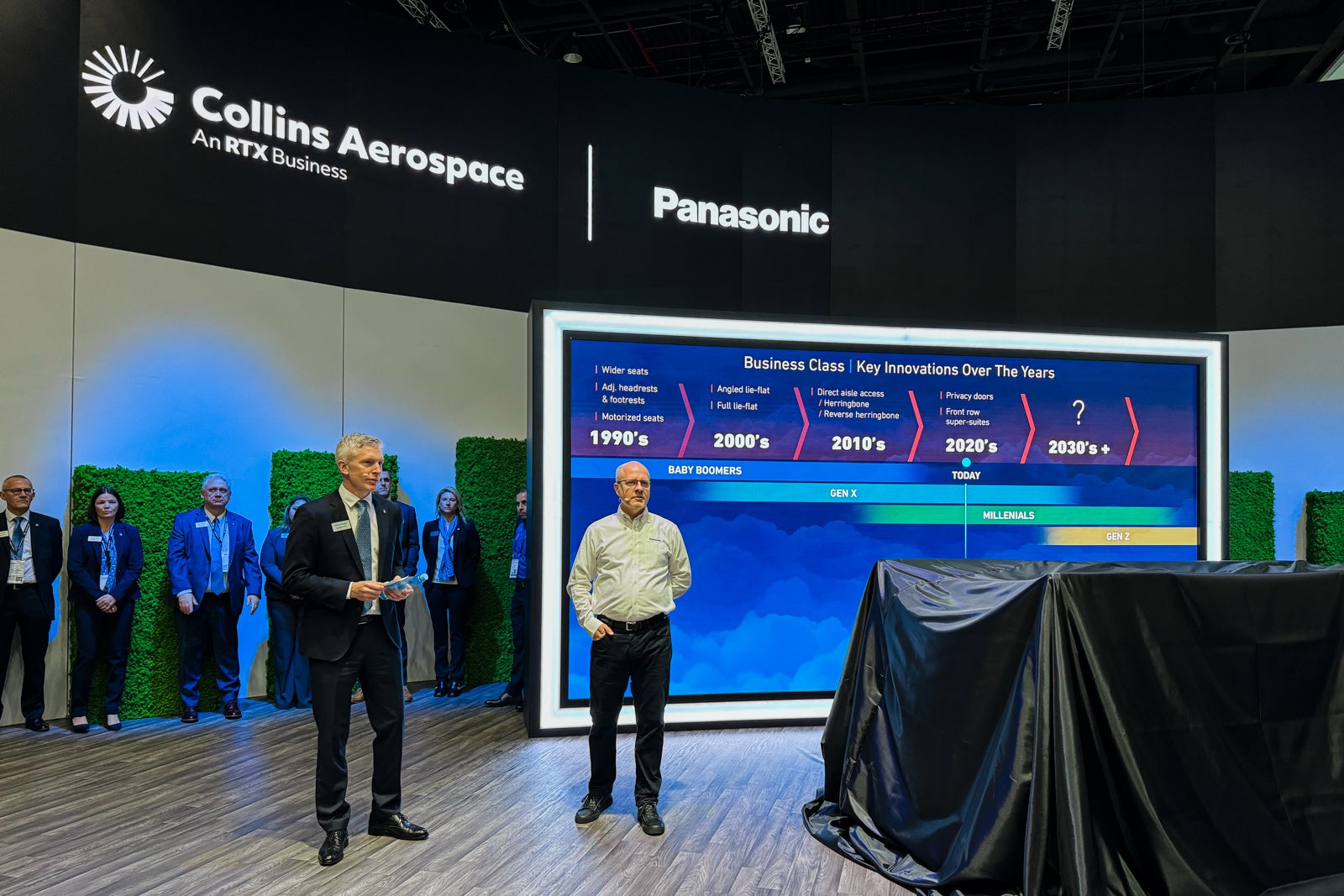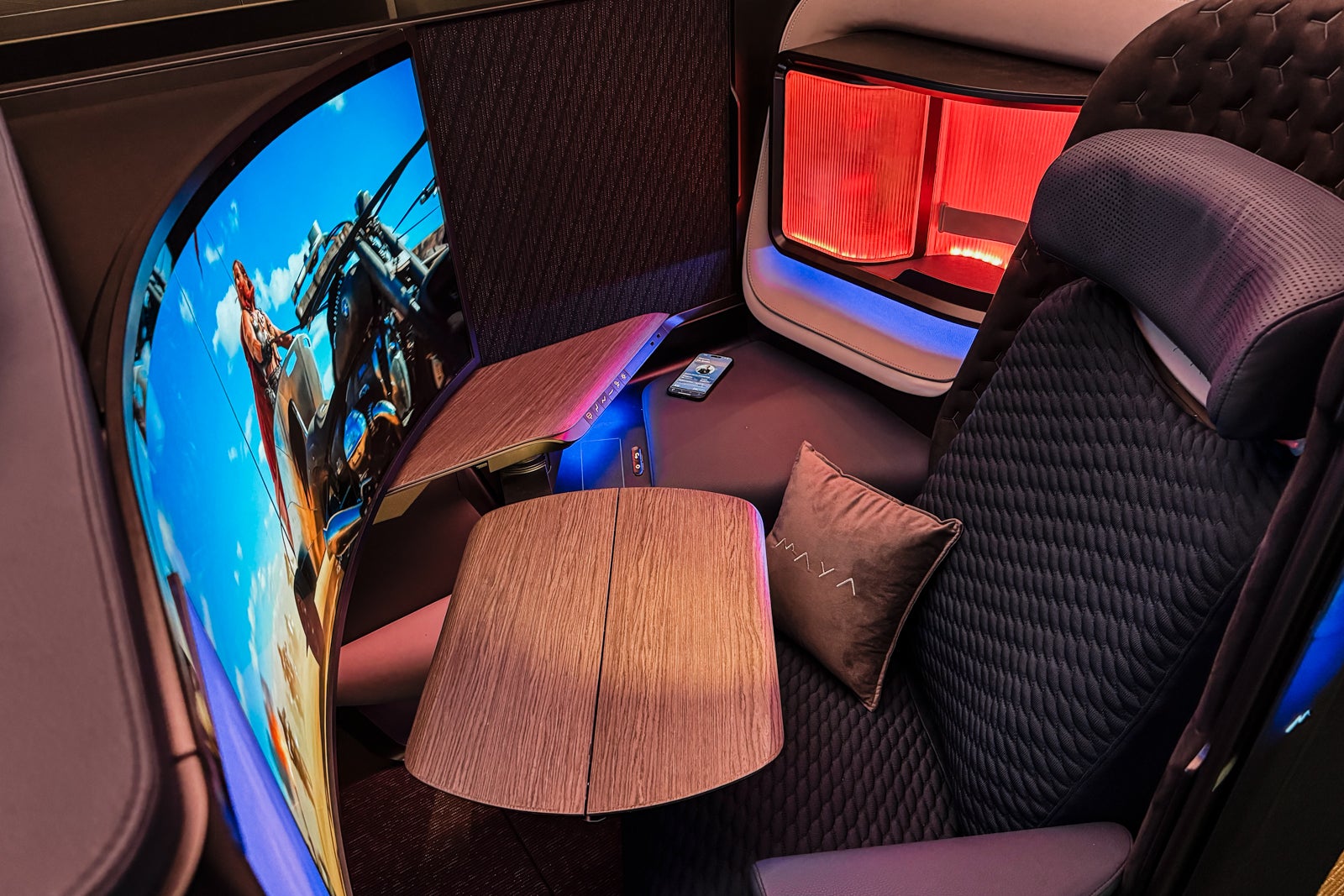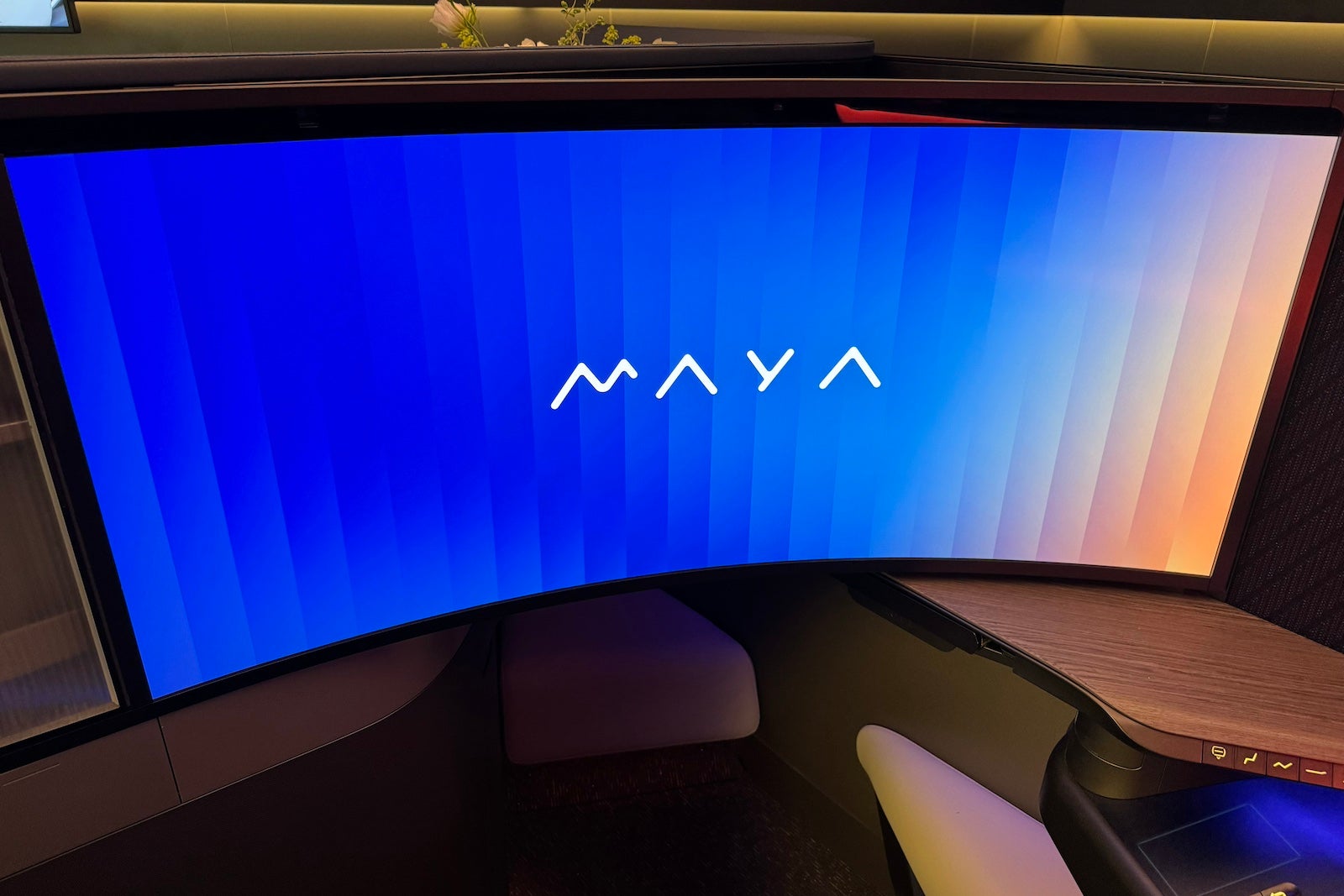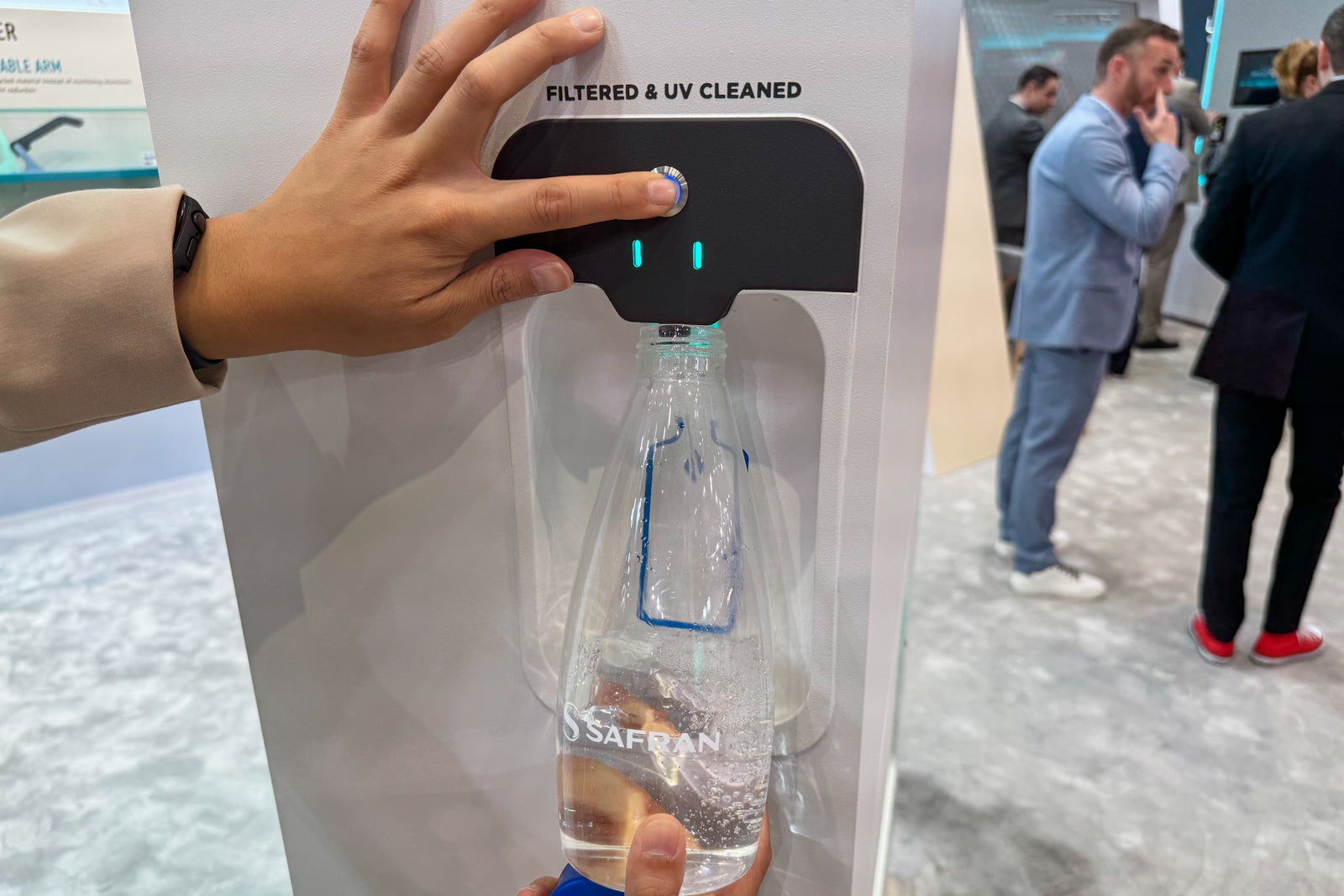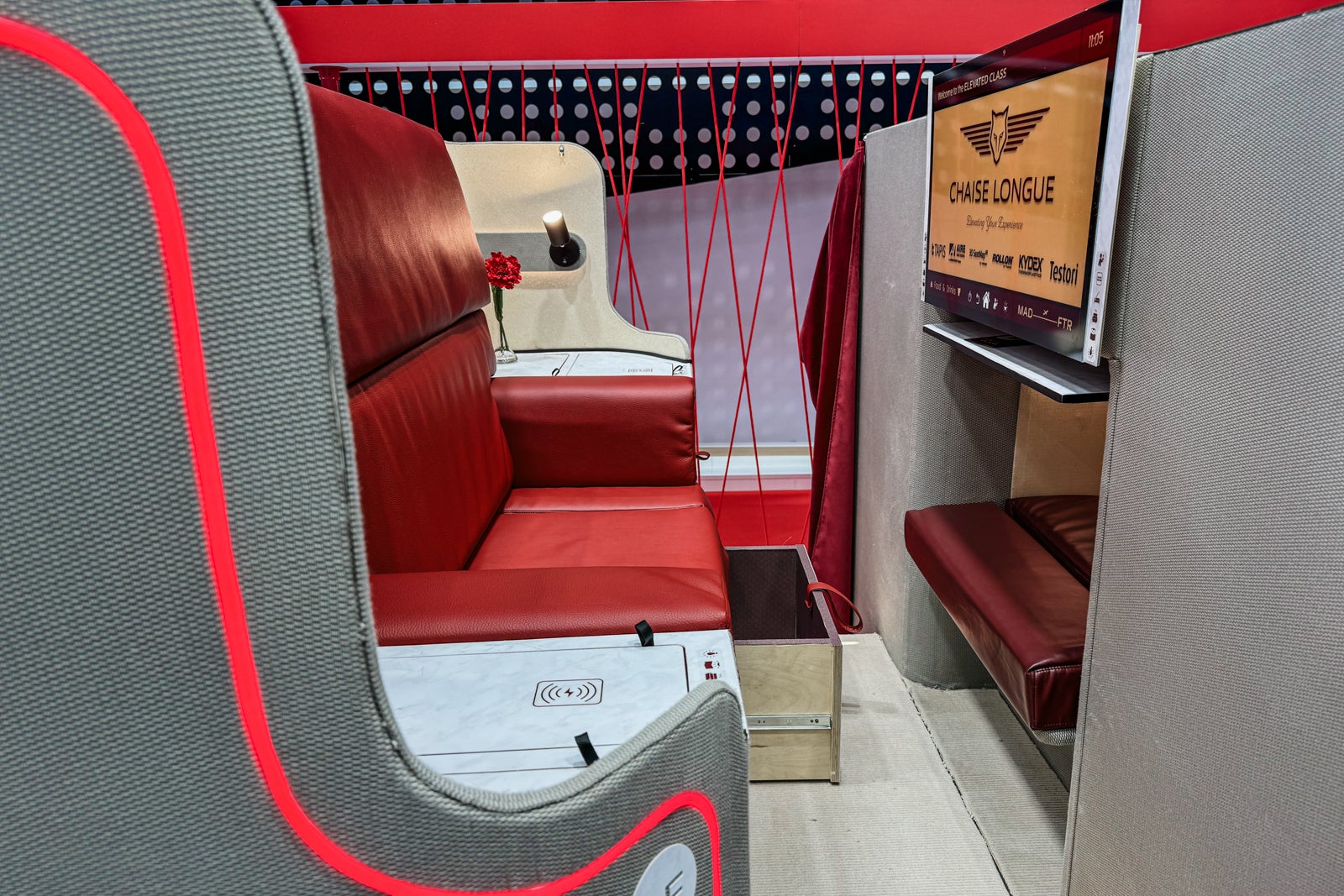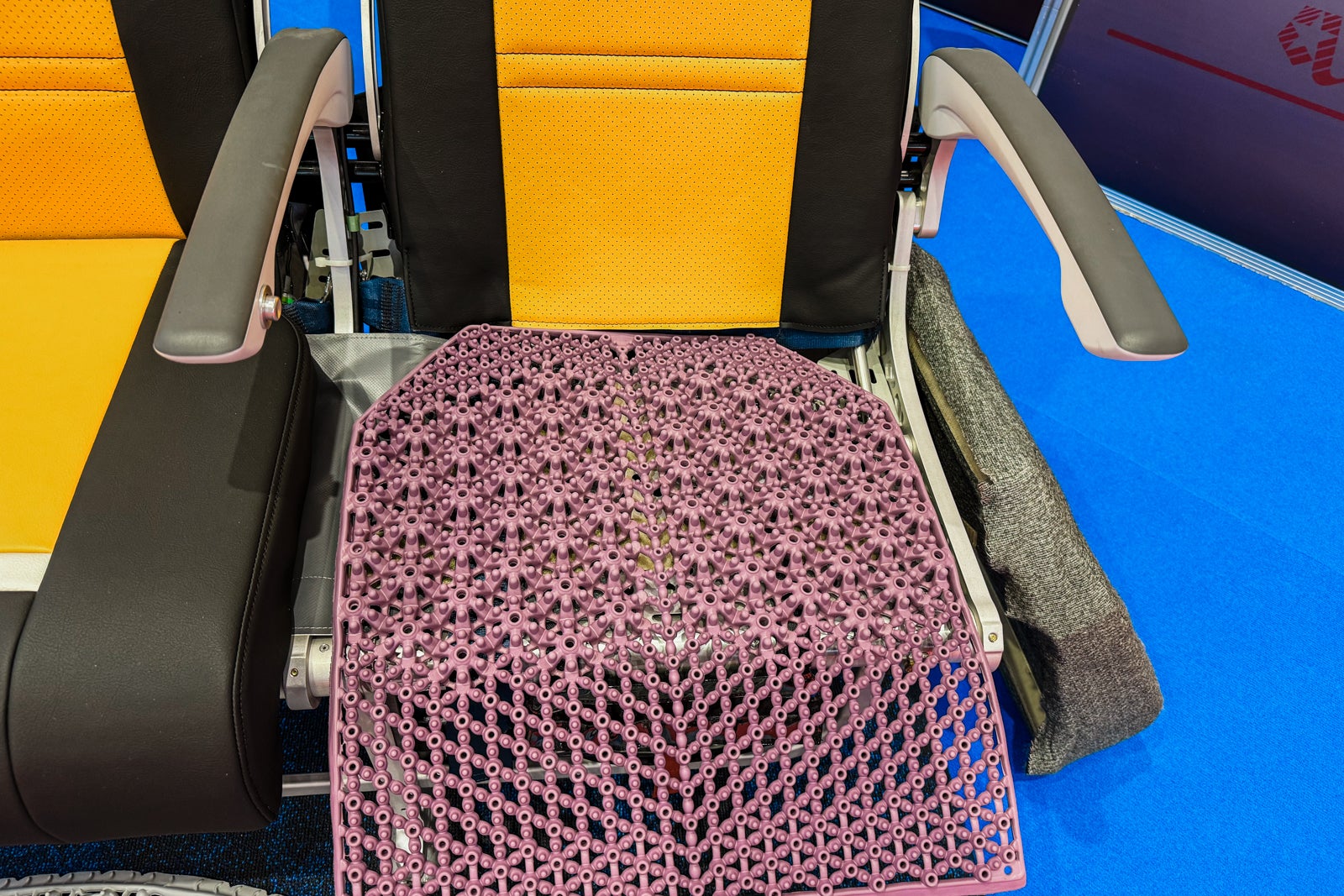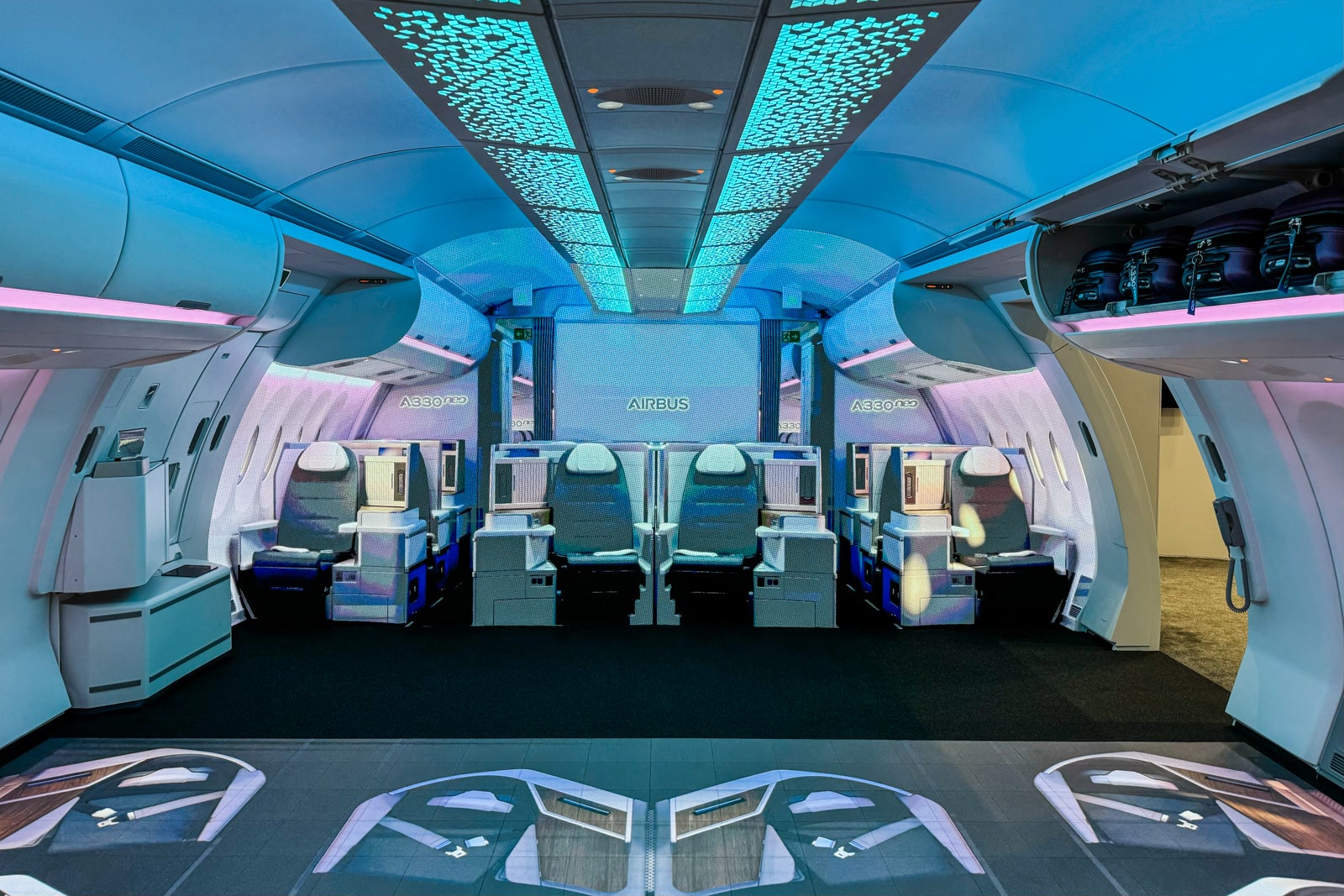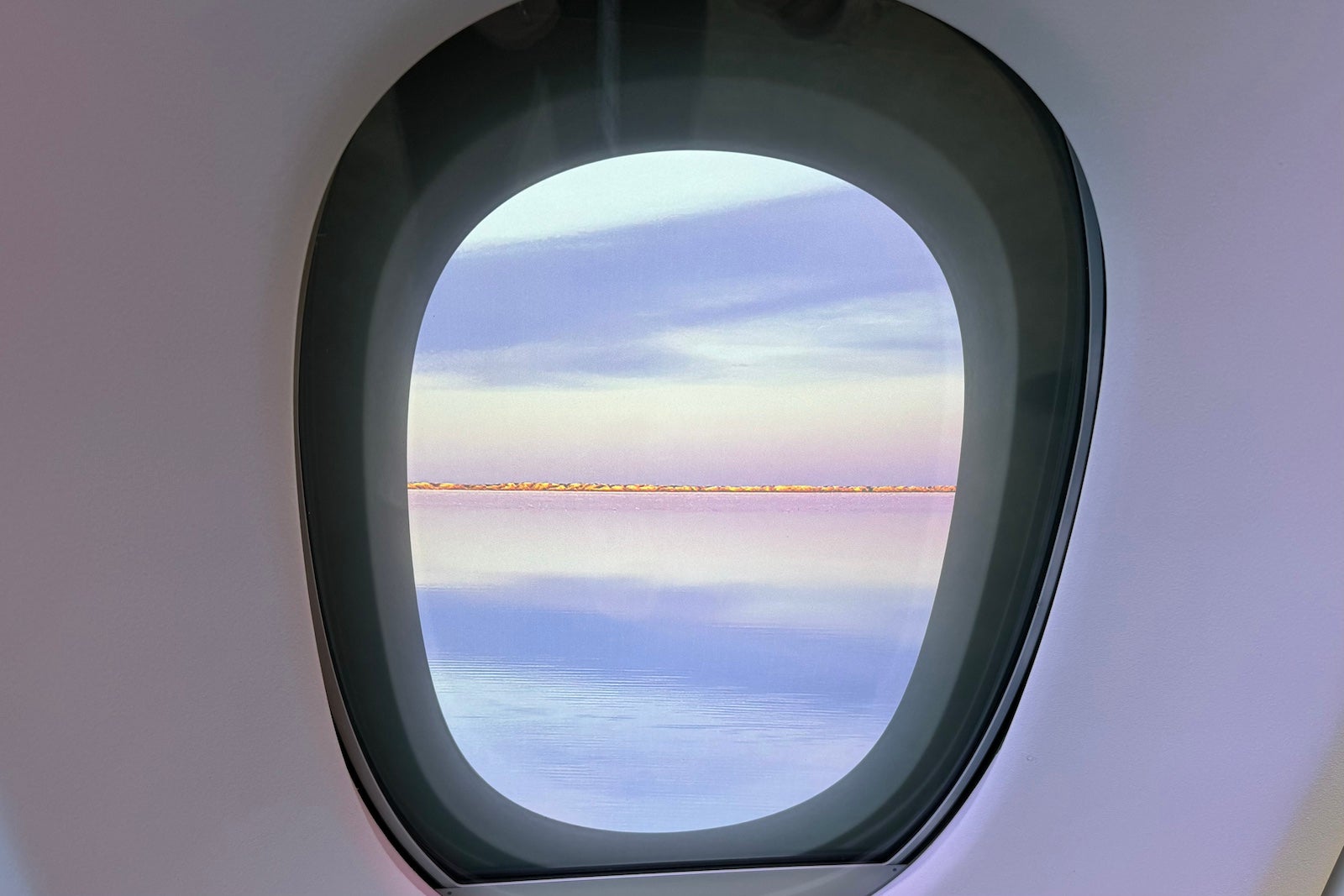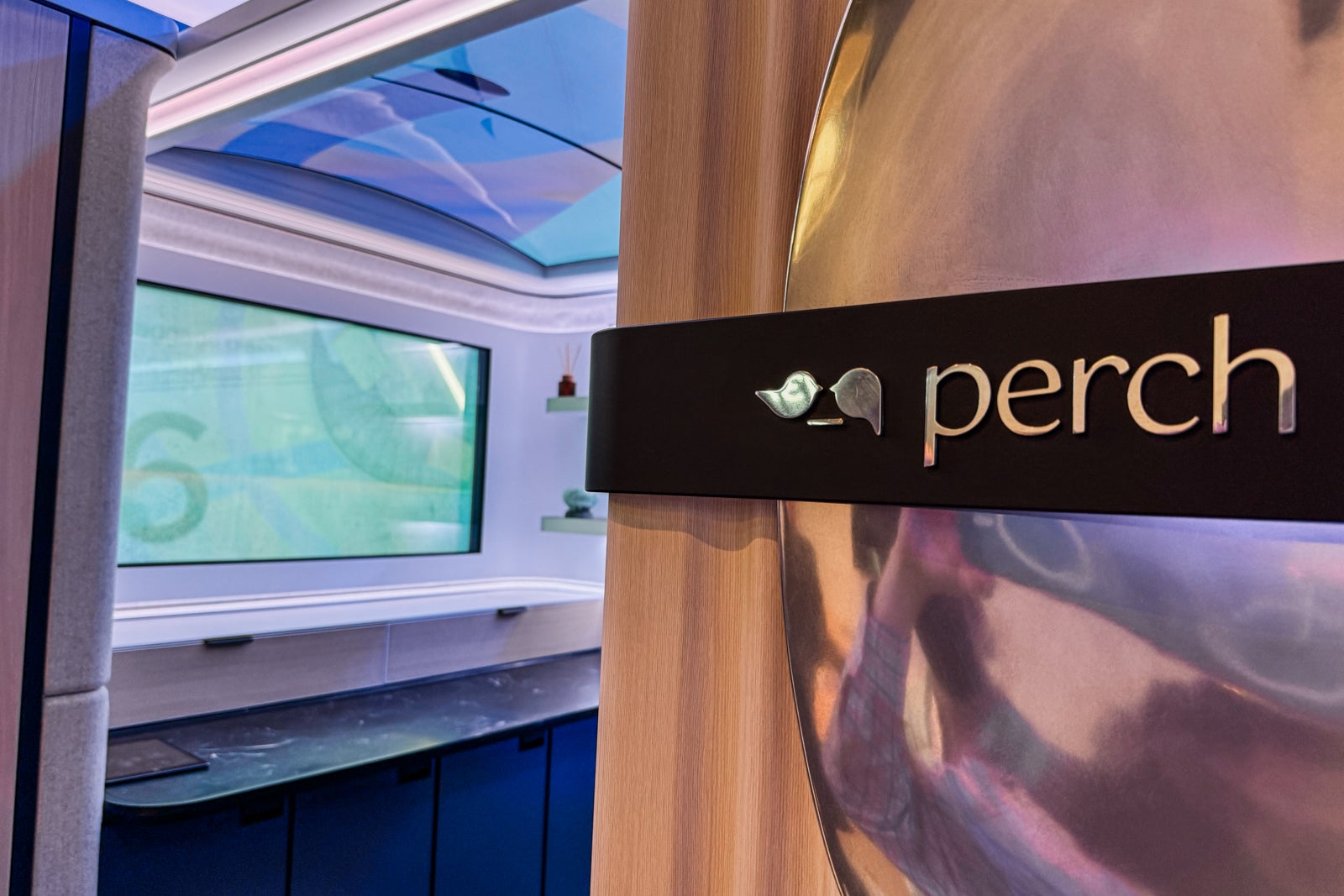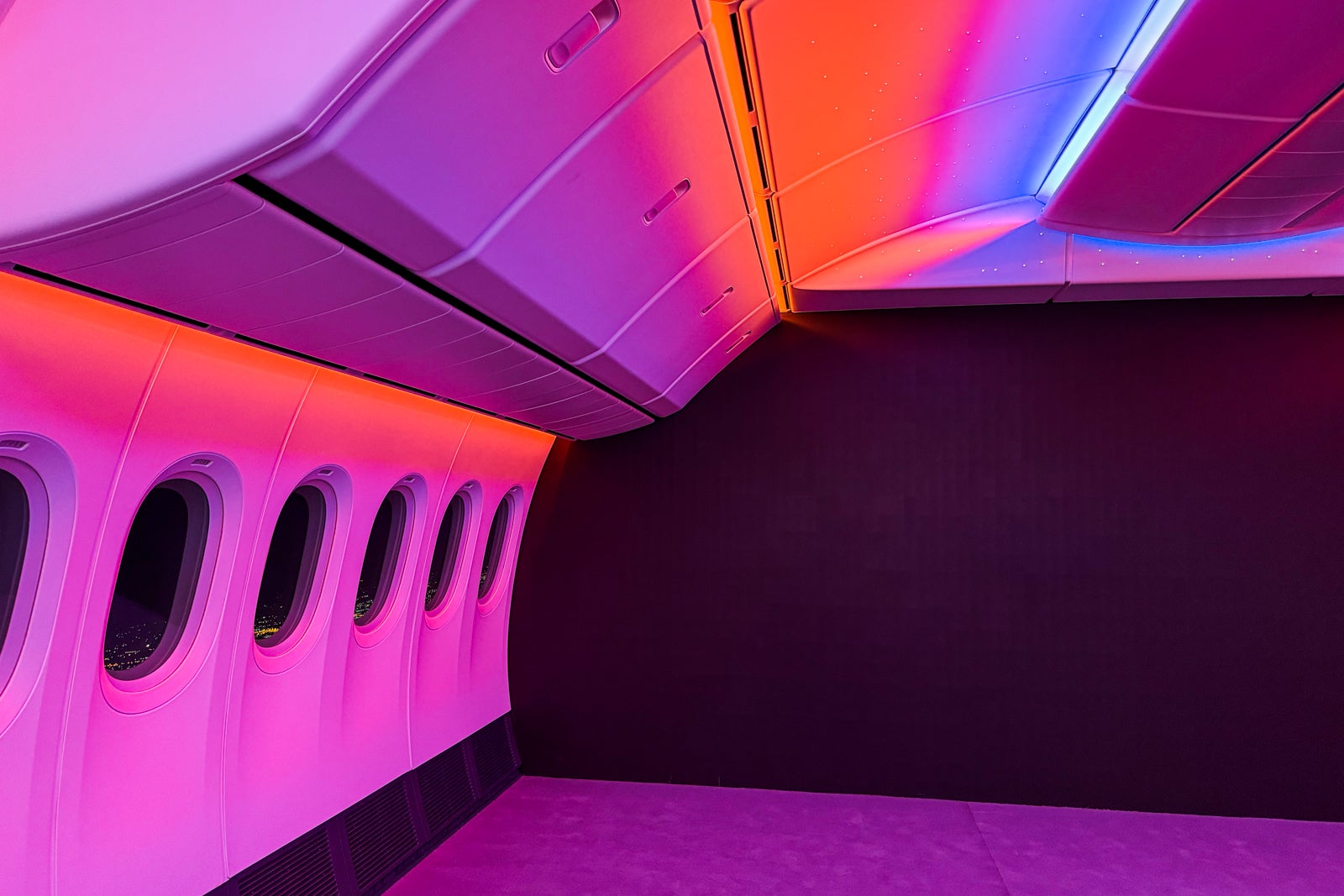Lie-flat seats. Direct aisle access. Suites with privacy doors. Entire onboard “apartments.” It’s safe to say business and first class have gone through an evolution.
Sure, an entire cabin with seats that convert to lie-flat beds was revolutionary when British Airways debuted it in 2000. Now, that’s often the bare minimum travelers expect when flying up front.
And airlines keep pushing the envelope, from sliding doors like you’ll find in JetBlue’s Mint cabin (and on a growing number of other airlines, too) to fully closed-off private rooms like the stunning new first-class seats on Japan Airlines’ new Airbus A350-1000.
Allow us to look 15 or 20 years into the future, though. What trendy new seat will be the ultimate redemption for your frequent flyer miles?
A recent trip to Europe offered some clues.
A new type of business-class seat
Inside a huge expo hall late last month in Hamburg, Germany, I watched as two companies unveiled what they see as the business-class suite of the future.
Housed in a dimly lit room with the authentic hum of jet engine white noise in the background, this futuristic pod named “Maya” certainly had the basics you’d expect today from any top-notch accommodations: a privacy door, a state-of-the-art lie-flat seat and plenty of storage.
But this pod also offers a lot more.
There’s a curved 45-inch screen the companies say makes for a better movie-watching experience than the theater. And the whole entertainment system syncs to your phone.

Daily Newsletter
Reward your inbox with the TPG Daily newsletter
Join over 700,000 readers for breaking news, in-depth guides and exclusive deals from TPG’s experts
Sensors adjust the seat based on your body temperature and pressure — a la the features you hear about in a commercial for a high-end mattress.
Not unlike the setup on Japan Airlines’ new Airbus A350s, headrest speakers will allow you to listen to a movie or music without headphones. (But Maya is also equipped with Bluetooth.)
1 of 7
SEAN CUDAHY/THE POINTS GUY
You can multitask with the ultra-wide screen, watching a 5K movie while you simultaneously plug in information about how much you want to sleep, eat and drink so the system can tailor the timing of your meal courses to your specific liking.
Sound like a seat you’d want to score for that next big redemption? Don’t start transferring your points just yet.
An idea in the works
Right now, Maya is simply a prototype — a concept born of a collaboration between Panasonic and Collins Aerospace.
Importantly, though, it’s where these prominent aviation companies think business class is headed over the coming years.
“This is really focused on the millennials, the Gen Zers — the people who are driving Teslas,” said Christophe Blanc, vice president and general manager for Collins’ seat business.
Will Maya find its way onto a commercial plane a few years from now? It’s up to airlines, which could just as easily say, “No thanks” — or make tweaks to it.
But seeing the ingenuity that produced this pod is the whole reason I traveled to Germany: to get a taste of the future aircraft cabin offered each year at Aircraft Interiors Expo, the aviation geek’s version of the Willy Wonka factory — one full of airplane seats, inflight screens, bells, whistles and far more imagination than anything found at that infamous flub of a Wonka attraction this past winter in Scotland.
And some of it might even be on a flight you’ll someday take.
Fill-it-yourself water bottle station
Twenty steps after leaving the Maya business-class pod, I ran into another concept sure to be appreciated by travelers who love their Stanley or Yeti water bottle.
You know those airport stations with filtered water where you can up fill up your reusable bottle? Well, what if you could do that on a flight?
Check out the setup below.
Forget asking the flight attendant for a cup of water. Engineers at aerospace manufacturer Safran showed off this prototype, which promises a tastier (and perhaps cleaner) hydration bet than the potable water options you’ll find on today’s commercial planes.
Double-decker seats
Walking a bit further, I encountered the latest take on a polarizing airplane cabin concept you may have heard about previously.
Ever read about the double-decker, bunk bed-esque seats idea?
Showed off last year, the concept is meant to pack more passengers into a plane by making use of the whole cabin — floor to ceiling.
Now, the inventor behind it is back with his take on a premium cabin.
Chaise Longue is now showcasing a new “elevated” class, which features “first-class” accommodations up top, and lie-flat “business” seats on the bottom.
1 of 6
SEAN CUDAHY/THE POINTS GUY
There’s plenty of storage, and space for screens and relaxing.
Whether this ever makes it onto a real aircraft will be driven by the interest it gets from airlines — not to mention major manufacturers like Boeing and Airbus.
Are any takers on the horizon? I wanted to ask the company’s founder, but he had to cut our conversation short. A representative from one of the aforementioned plane-makers was waiting for a tour.
A land of seats, screens and innovation
Tour the expo, and you’ll find just about everything: Robotlike devices. Seat coverings displayed like paint swatches at Home Depot. The screens that’ll soon be on the Air Canada fleet’s seatbacks.
1 of 3
SEAN CUDAHY/THE POINTS GUY
And seats. So many seats — coach, premium economy, business, you name it.
1 of 4
SEAN CUDAHY/THE POINTS GUY
Want to know how the Airbus A321XLR — a narrow-body plane that’ll be able to fly from parts of the U.S. to Europe — will look on the inside?
Here’s the general aesthetic.
1 of 5
SEAN CUDAHY/THE POINTS GUY
Of course, airlines can (and will) customize the interior to their brand and liking. American Airlines, for one, showed off how it plans to do just that with the soon-to-be-delivered jet, featuring the carrier’s new Flagship Business suites. The aircraft, American shared in Hamburg, will start by taking over transcontinental routes currently operated by its swanky, four-cabin A321T.
Worried about how comfortable Southwest Airlines’ new seats will be? Early mock-ups sparked some controversy.
They’re a lot more comfortable than the 3D renderings looked, I found, sitting in them at an unveiling in Hamburg. They’ll be on new jets starting in 2025.
1 of 2
SEAN CUDAHY/THE POINTS GUY
I was fairly impressed by the seats’ lumbar support, which was a big focus, the seat-maker’s CEO told me in a sit-down interview.
“It’s not just a flat backrest. It’s really with the S-curve of your spine,” said Recaro CEO Mark Hiller. “Southwest put a lot of effort into really a soft layer. I think that the feedback will be very positive.”
Some of the concepts found in Hamburg may sound a bit quirky, at least at first. Texas-based Starr Aircraft’s idea for a seat cushion was remarkably soothing to stand on after tens of thousands of steps over three days.
Someday, you may end up sitting on the spongy material which, I learned, is actually medical-grade foam similar to that found on Crocs.
“We hope to see this on an airline soon,” a company representative told me.
Walking around, though, there were plenty of innovations that were anything but eccentric.
Airbus unveils new A330neo cabin
Airbus, for instance, unveiled the new cabin design for its future Airbus A330neo wide-body jets.
The mock-up of its “Airspace” cabin — like what’s on its forthcoming A321XLR shown above — boasted calming mood lighting and spacious overhead bins, contributing to what the Toulouse, France-based plane-maker calls a “unique ambience” airlines can use as a jumping-off point for customizing their cabins.
Airbus saw 42 A330neo orders in 2023 with 32 jets delivered, noted Ingo Wuggetzer, vice president of carbon marketing.
This new design will be lighter weight, he said — that’s key for fuel efficiency.
Plus, Wuggetzer added, there’s “a lot more comfort, a lot more premium experience in the future.”
Among the new features: larger, shadeless windows with dimmable tinting similar to what you’ll find on some other aircraft — including Boeing’s 787 Dreamliner.
Boeing’s place to stretch your legs in flight
Speaking of the Dreamliner, Boeing offered up its own vision for innovating on board the wide-body jet — an idea meant for the economy cabin, no less.
Dubbed the Perch, this onboard space designed for the 787 is a spot where customers could lean up against a padded wall, getting some steps in midflight. There’s a large screen, and space to grab a snack or a drink.
1 of 5
SEAN CUDAHY/THE POINTS GUY
Boeing’s offering it, but will airlines go for it? Removing seats from the cabin is often a nonstarter, but most of us would love a place to stretch our legs during a long flight — especially as flights of 14 hours or more become increasingly common.
Looking ahead
Make no mistake, though: A lot of the buzz in the industry today focuses on how to make the newest and most exciting seats in business and first class, particularly as airlines continue to see robust demand for their high-end seats.
“There is a lot of investment really going into the premium products,” said Hiller, the Recaro CEO, noting the emphasis airlines are placing on doors in business class, and seat wings, or flaps, in premium economy — like the seats his company showed off.
1 of 2
SEAN CUDAHY/THE POINTS GUY
“It’s about privacy,” Hiller added.
Bottom line
After some 45,000 steps in three days, my takeaways on what a future flight will look like? Expect personalized spaces you can control and customize from your phone. You’ll likely see airlines double down on private suites and push the envelope with stand-out, ultraluxurious front-row accommodations.
Screens aren’t going away; quite the opposite. They’re getting thinner, wider and better.
You’ll see more elaborate mood lighting, like this dynamic lighting capability Boeing showed off for the Dreamliner and its forthcoming 777X aircraft. This particular setting is meant to mimic the Northern Lights.
Expect lighter materials that help planes fly more efficiently, consuming less fuel — key for sustainability. We should see more Wi-Fi that’s faster and more reliable — and, increasingly, cheaper to use (though maybe not the latter on American Airlines).
Plus, new and innovative ways for every passenger — regardless of their level of mobility — to be able to travel.

